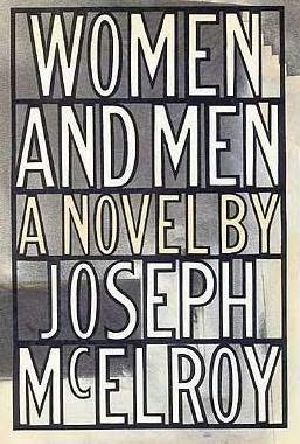Women and Men

- Authors
- Joseph McElroy
- Publisher
- Dalkey Archive Press
- Tags
- fiction
- ISBN
- 9781564780232
- Date
- 1987-01-01T23:00:00+00:00
- Size
- 2.26 MB
- Lang
- en
Beginning in childbirth and entered like a multiple dwelling in motion, Women and Men embraces and anatomizes the 1970s in New Yorkfrom experiments in the chaotic relations between the sexes to the flux of the city itself. Yet through an intricate overlay of scenes, voices, fact, and myth, this expanding fiction finds its way also across continents and into earlier and future times and indeed the Earth, to reveal connections between the most disparate lives and systems of feeling and power. At its breathing heart, it plots the fuguelike and fieldlike densities of late-twentieth-century life.
McElroy rests a global vision on two people, apartment-house neighbors who never quite meet. Except, that is, in the population of others whose histories cross theirsbelievers and skeptics; lovers, friends, and hermits; children, parents, grandparents, avatars, and, apparently, angels. For Women and Men shows how the families through which we pass let one person's experience belong to that of many, so that we throw light on each other as if these kinships were refracted lives so real as to be reincarnate.
A mirror of manners, the book is also a meditation on the languagesrich, ludicrous, exact, and also Americanin which we try to grasp the world we're in. Along the kindred axes of separation and intimacy Women and Men extends the great line of twentieth-century innovative fiction.
From Publishers WeeklyThe daunting (1190 pages) length of this novel is the least of the impediments the author imposes between its sheer mass and the most willing reader. Even more challenging is a narrative manner by design elusive, at times opaque, interspersed with digressions, eccentricities, parentheses and asides. The plot focuses on the lives of James Mayn, a journalist come to New York from a town in New Jersey, and Grace Kimball, a feminist/therapist who conducts what she calls a Body-Self workshop for women who have been through the mill. (She is Mayn's neighbor, though the two never meet.) Gradually, fragment by fragment, aspects of their lives are examined, along with the lives of their families, friends, associates, in an effort to encompass a wide range of American experience and some sources of contemporary anxiety and anguish: marriage and divorce, parents and children, sexual deviation, U.S. intervention in Latin American politics, environmental pollution and destruction, nuclear devastation. Across the affective spectrum from estrangment to connectedness, the narrative voices return always to the themes of feeling. "It's what's between us," a voice says, "or we share." McElroy's ambition is heroic (the novel represents a decade's work), his canvas densely peopled, the animating talent unmistakable; but his narrative method is so diffuse and fragmentary, so willfully withholding of information, that the reader's admiration can soon give way to fatigue. Copyright 1987 Reed Business Information, Inc.
From Library JournalThis work belongs to that neglected genre of the Sixties, the mega-novel. It is a sprawling narrative full of weird characters, confusing subplots, multiple time frames, and huge chunks of esoteric information. The story focuses on a meteorologist, James Mayn, and a feminist, Grace Kimball, who live in the same apartment building in New York, though "focus" may be the wrong word: a basic structural device is to touch briefly on a wide range of subjects, then circle back and add more detail. Thus, there are digressions on the weather, lesbianism, space exploration, the CIA's role in Chile, and the many uses of jojoba beans; only after a few hundred pages can the reader begin to discern any pattern. McElroy's critical reputation has always been impeccable, his audience negligible. (His most recent novel was Lookout Cartridge, LJ 2/1/75.) This book probably won't change that. It is not sexy or suspenseful, but it is endlessly fascinatingand it is McElroy's most ambitious, most successful work to date. Edward B. St. John, Loyola Marymount Univ. Lib., Los AngelesCopyright 1987 Reed Business Information, Inc.